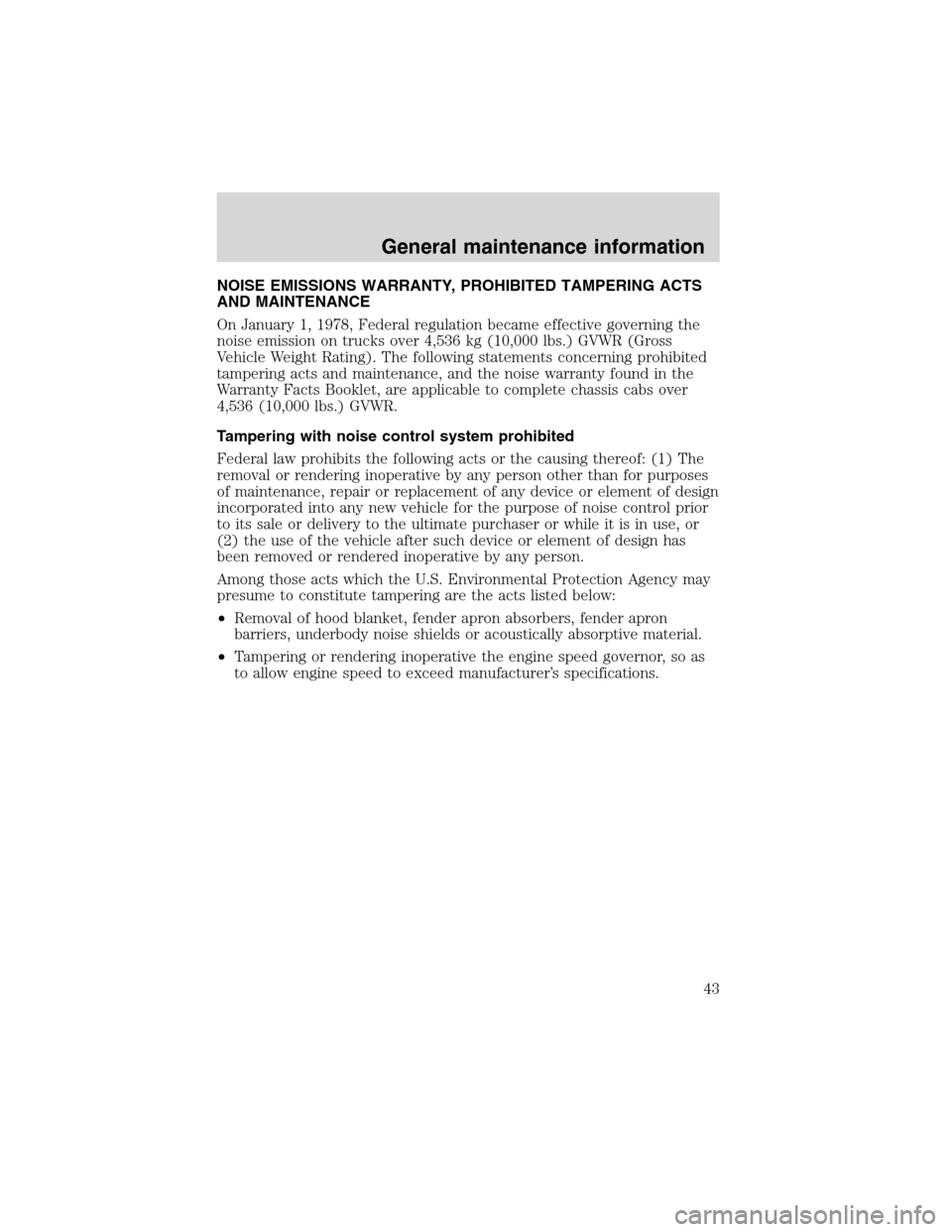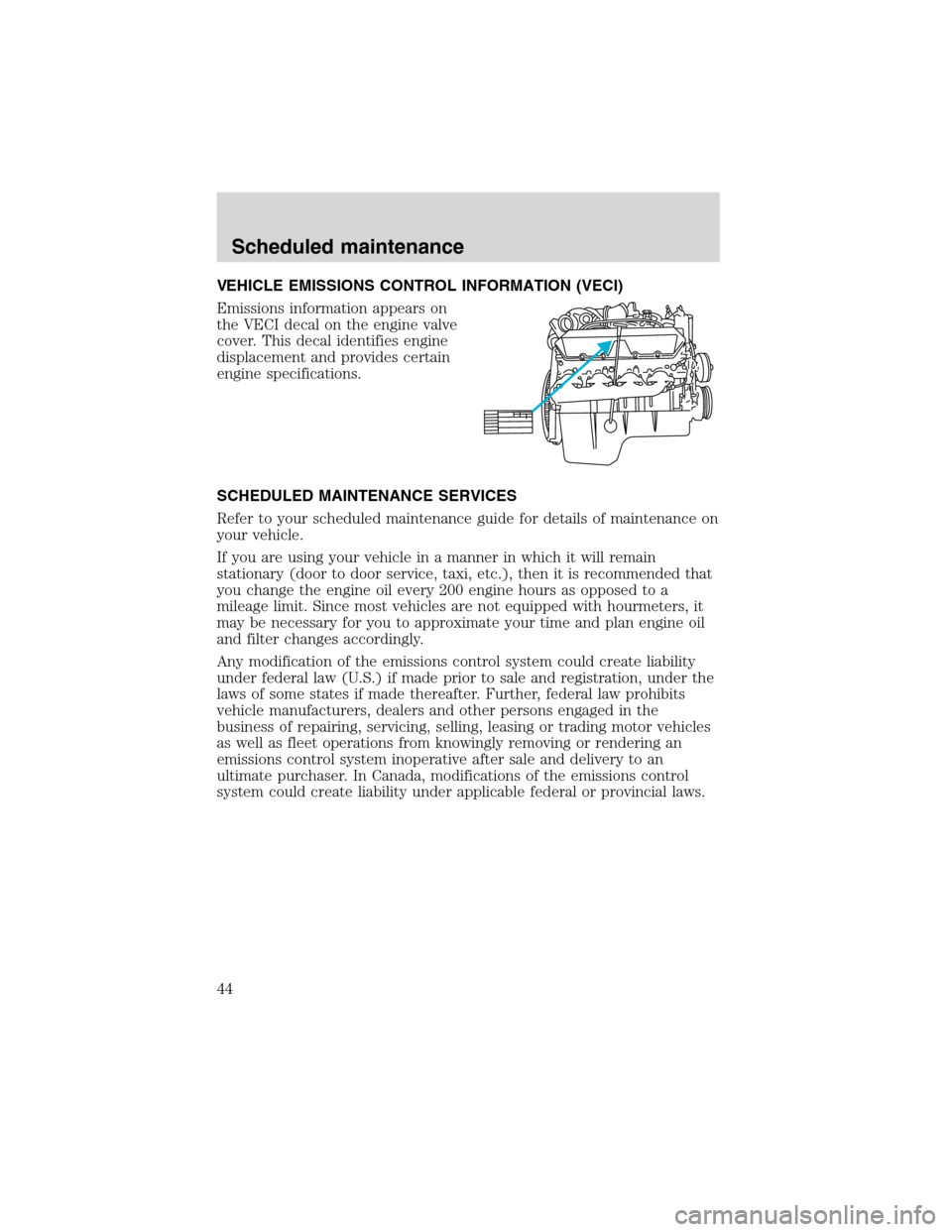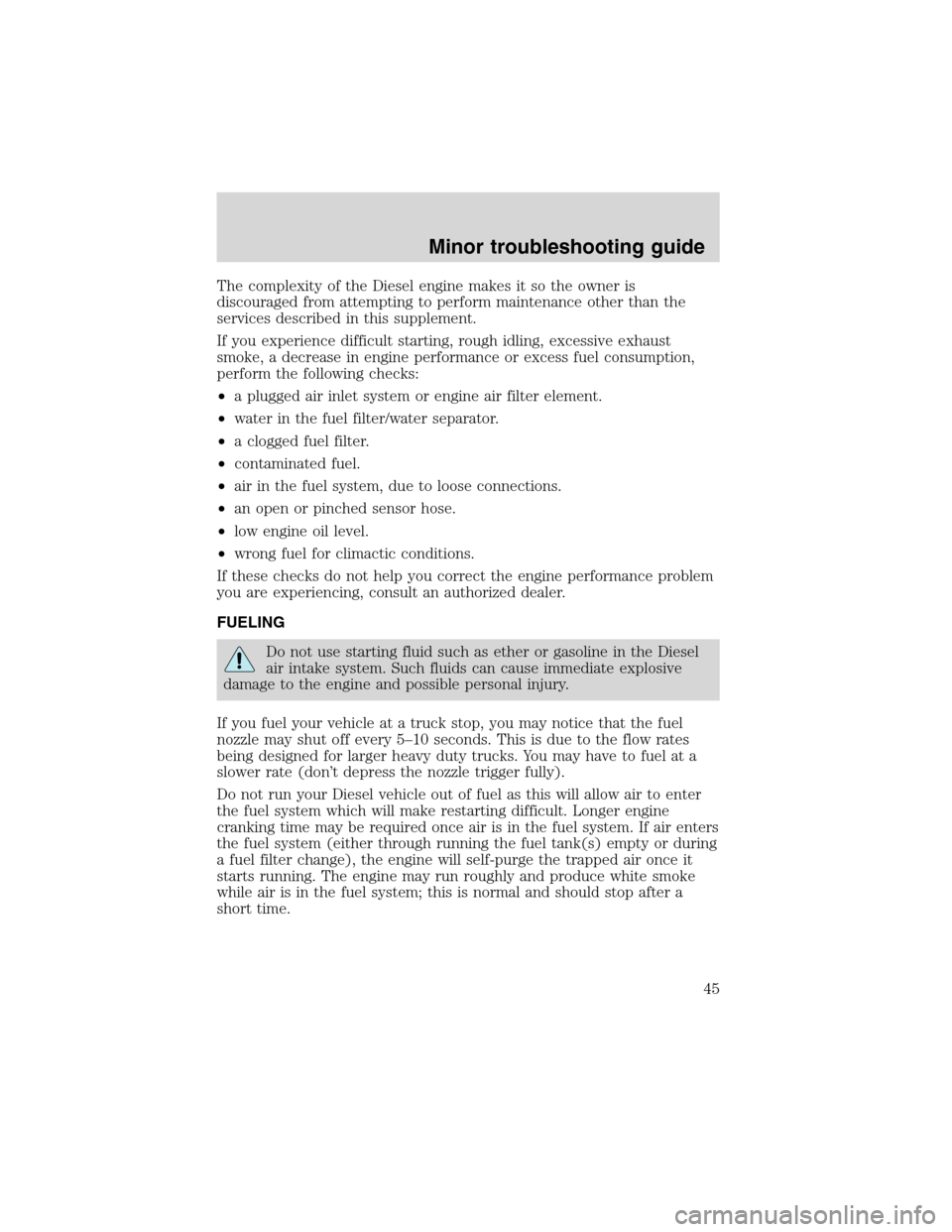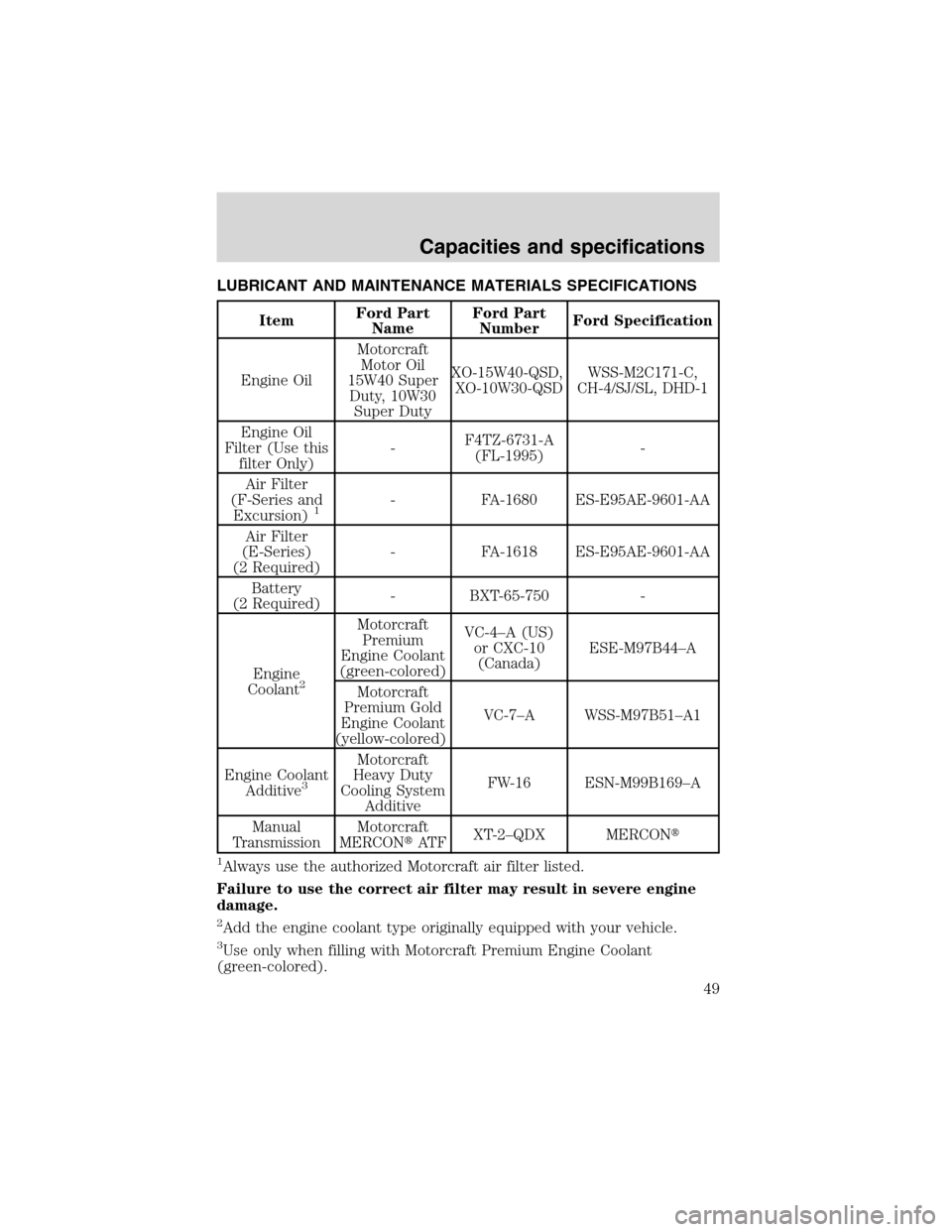Page 43 of 56

NOISE EMISSIONS WARRANTY, PROHIBITED TAMPERING ACTS
AND MAINTENANCE
On January 1, 1978, Federal regulation became effective governing the
noise emission on trucks over 4,536 kg (10,000 lbs.) GVWR (Gross
Vehicle Weight Rating). The following statements concerning prohibited
tampering acts and maintenance, and the noise warranty found in the
Warranty Facts Booklet, are applicable to complete chassis cabs over
4,536 (10,000 lbs.) GVWR.
Tampering with noise control system prohibited
Federal law prohibits the following acts or the causing thereof: (1) The
removal or rendering inoperative by any person other than for purposes
of maintenance, repair or replacement of any device or element of design
incorporated into any new vehicle for the purpose of noise control prior
to its sale or delivery to the ultimate purchaser or while it is in use, or
(2) the use of the vehicle after such device or element of design has
been removed or rendered inoperative by any person.
Among those acts which the U.S. Environmental Protection Agency may
presume to constitute tampering are the acts listed below:
•Removal of hood blanket, fender apron absorbers, fender apron
barriers, underbody noise shields or acoustically absorptive material.
•Tampering or rendering inoperative the engine speed governor, so as
to allow engine speed to exceed manufacturer’s specifications.
General maintenance information
43
Page 44 of 56

VEHICLE EMISSIONS CONTROL INFORMATION (VECI)
Emissions information appears on
the VECI decal on the engine valve
cover. This decal identifies engine
displacement and provides certain
engine specifications.
SCHEDULED MAINTENANCE SERVICES
Refer to your scheduled maintenance guide for details of maintenance on
your vehicle.
If you are using your vehicle in a manner in which it will remain
stationary (door to door service, taxi, etc.), then it is recommended that
you change the engine oil every 200 engine hours as opposed to a
mileage limit. Since most vehicles are not equipped with hourmeters, it
may be necessary for you to approximate your time and plan engine oil
and filter changes accordingly.
Any modification of the emissions control system could create liability
under federal law (U.S.) if made prior to sale and registration, under the
laws of some states if made thereafter. Further, federal law prohibits
vehicle manufacturers, dealers and other persons engaged in the
business of repairing, servicing, selling, leasing or trading motor vehicles
as well as fleet operations from knowingly removing or rendering an
emissions control system inoperative after sale and delivery to an
ultimate purchaser. In Canada, modifications of the emissions control
system could create liability under applicable federal or provincial laws.
Scheduled maintenance
44
Page 45 of 56

The complexity of the Diesel engine makes it so the owner is
discouraged from attempting to perform maintenance other than the
services described in this supplement.
If you experience difficult starting, rough idling, excessive exhaust
smoke, a decrease in engine performance or excess fuel consumption,
perform the following checks:
•a plugged air inlet system or engine air filter element.
•water in the fuel filter/water separator.
•a clogged fuel filter.
•contaminated fuel.
•air in the fuel system, due to loose connections.
•an open or pinched sensor hose.
•low engine oil level.
•wrong fuel for climactic conditions.
If these checks do not help you correct the engine performance problem
you are experiencing, consult an authorized dealer.
FUELING
Do not use starting fluid such as ether or gasoline in the Diesel
air intake system. Such fluids can cause immediate explosive
damage to the engine and possible personal injury.
If you fuel your vehicle at a truck stop, you may notice that the fuel
nozzle may shut off every 5–10 seconds. This is due to the flow rates
being designed for larger heavy duty trucks. You may have to fuel at a
slower rate (don’t depress the nozzle trigger fully).
Do not run your Diesel vehicle out of fuel as this will allow air to enter
the fuel system which will make restarting difficult. Longer engine
cranking time may be required once air is in the fuel system. If air enters
the fuel system (either through running the fuel tank(s) empty or during
a fuel filter change), the engine will self-purge the trapped air once it
starts running. The engine may run roughly and produce white smoke
while air is in the fuel system; this is normal and should stop after a
short time.
Minor troubleshooting guide
45
Page 49 of 56

LUBRICANT AND MAINTENANCE MATERIALS SPECIFICATIONS
ItemFord Part
NameFord Part
NumberFord Specification
Engine OilMotorcraft
Motor Oil
15W40 Super
Duty, 10W30
Super DutyXO-15W40-QSD,
XO-10W30-QSDWSS-M2C171-C,
CH-4/SJ/SL, DHD-1
Engine Oil
Filter (Use this
filter Only)-F4TZ-6731-A
(FL-1995)-
Air Filter
(F-Series and
Excursion)
1- FA-1680 ES-E95AE-9601-AA
Air Filter
(E-Series)
(2 Required)- FA-1618 ES-E95AE-9601-AA
Battery
(2 Required)- BXT-65-750 -
Engine
Coolant
2
Motorcraft
Premium
Engine Coolant
(green-colored)VC-4–A (US)
or CXC-10
(Canada)ESE-M97B44–A
Motorcraft
Premium Gold
Engine Coolant
(yellow-colored)VC-7–A WSS-M97B51–A1
Engine Coolant
Additive
3
Motorcraft
Heavy Duty
Cooling System
AdditiveFW-16 ESN-M99B169–A
Manual
TransmissionMotorcraft
MERCON�AT FXT-2–QDX MERCON�
1Always use the authorized Motorcraft air filter listed.
Failure to use the correct air filter may result in severe engine
damage.
2Add the engine coolant type originally equipped with your vehicle.
3Use only when filling with Motorcraft Premium Engine Coolant
(green-colored).
Capacities and specifications
49